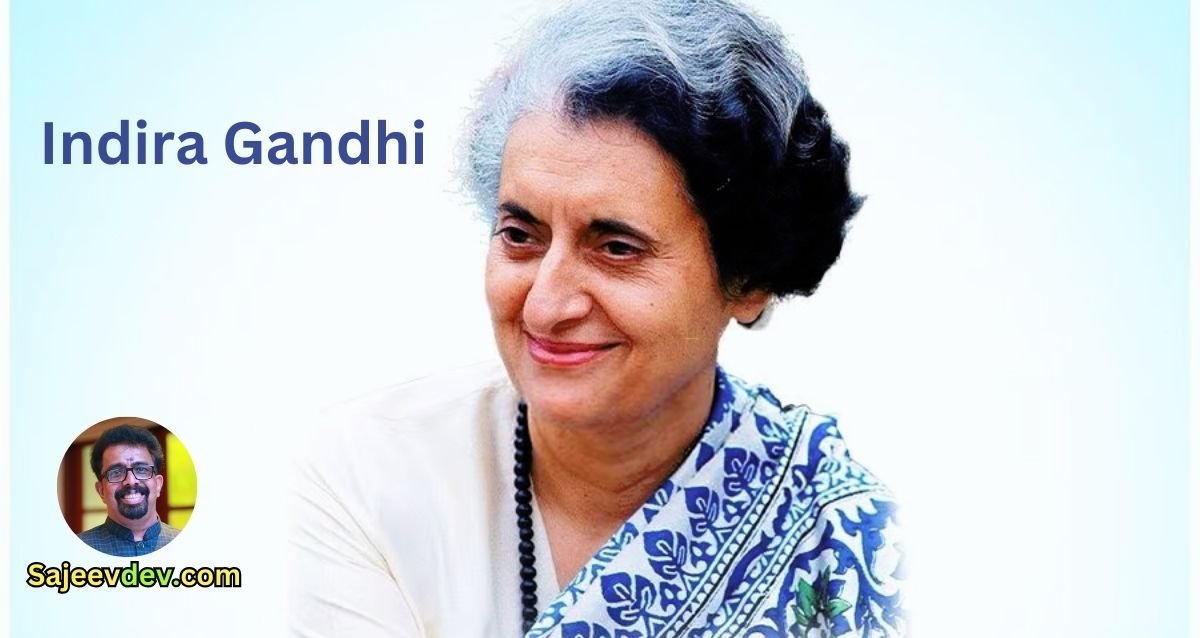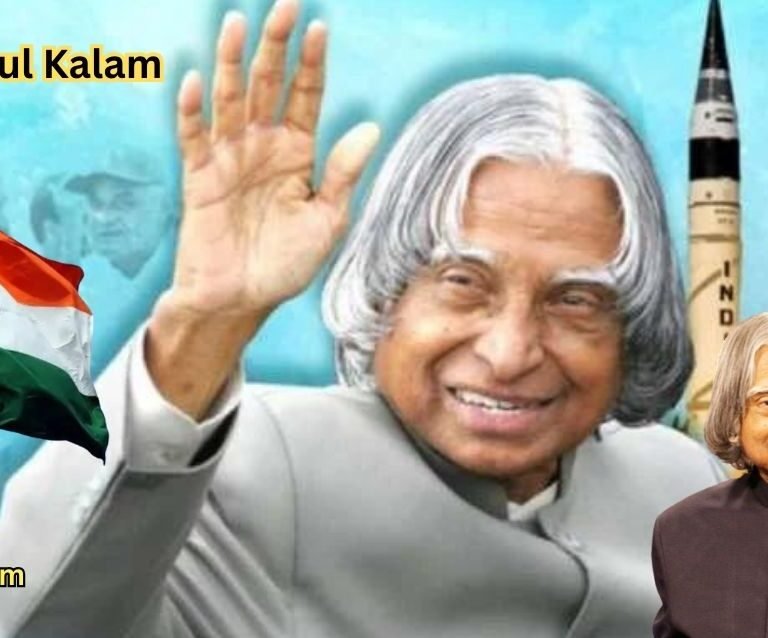Early Life and Education
Indira Priyadarshini Gandhi was born on November 19, 1917, in Allahabad, India. As the daughter of Jawaharlal Nehru, India’s first Prime Minister, her early life was deeply intertwined with the country’s socio-political landscape. Indira’s family background was one of immense political involvement and influence, which played a significant role in shaping her future. Her formative years were marked by a blend of traditional Indian culture and progressive Western ideas. Growing up in the Nehru household meant frequent interactions with key figures in the independence movement and exposure to intense political discussions, imprinting strong ideological foundations from a young age.
Indira’s formative education began under the guidance of private tutors at home, followed by a formal education at Shantiniketan, the school founded by Rabindranath Tagore. Here, she was introduced to broad cultural education, emphasizing the importance of Indian heritage coupled with progressive ideas. Tagore’s influence on her was profound, encouraging her to think independently and develop a sense of resilience that would be crucial in her later political life.
Seeking higher education, Indira went on to study at the University of Oxford in England. Despite initial challenges, including health issues and the rigors of adjusting to a new academic and cultural environment, she demonstrated commendable perseverance. Her time at Oxford was influential, contributing to her understanding of global politics and international relations. Additionally, her exposure to Western ideologies and practices expanded her worldview, further refining her political beliefs and strategies.
This amalgamation of experiences from her upbringing and education provided Indira with a unique perspective, blending traditional Indian values with modern, progressive thought processes. These elements, deeply embedded in her life from an early stage, were pivotal in shaping her approach to leadership and governance. As she navigated through the complexities of Indian politics, these foundational experiences remained intrinsic to her identity, informing her decisions and political strategies throughout her career.
Path to Political Involvement
Indira Gandhi’s journey toward political involvement was a natural progression given her early exposure to the Indian independence movement. Born into a prominent political family, her father, Jawaharlal Nehru, was a central figure in India’s struggle for independence and later became the first Prime Minister of independent India. This familial backdrop provided Indira with a unique upbringing steeped in the politics of the time. From an early age, she was not only a spectator to the events but also actively engaged in them, accompanying her father to various political meetings and rallies.
Indira Gandhi’s formal induction into politics began with her association with the Indian National Congress (INC). Often referred to as the nerve center of Indian political activity during the independence movement, the INC played a pivotal role in shaping her political ideology and strategies. Her early roles in the party were marked by a careful honing of her administrative skills and political acumen. She initially served as her father’s hostess, assisting him during official visits and meetings, which gave her valuable insights into the functioning of the government and the party.
As she matured politically, Indira Gandhi began to undertake more substantive responsibilities within the Congress party. She took on the task of organizing the Congress Youth Division, placing a strategic emphasis on mobilizing young Indians in support of the party’s objectives. This experience was crucial in shaping her future leadership qualities and prepared her for the larger roles that awaited her. Her early initiatives often involved addressing social issues, which helped her to establish a connect with people from different strata of society, further solidifying her place within the party.
Gradually, her unwavering commitment and adept handling of responsibilities within the INC did not go unnoticed. She ascended through the party ranks, demonstrating a blend of resilience, strategic thinking, and an innate capacity for leadership. Her early political involvement set the groundwork for her eventual rise to leadership, marking the beginning of a significant journey that would leave an indelible imprint on India’s political landscape.
Becoming Prime Minister
Indira Gandhi’s ascent to the role of Prime Minister of India was marked by both political acumen and circumstantial advantage. Her political lineage played a pivotal role; being the daughter of Jawaharlal Nehru, India’s first Prime Minister, endowed her with significant visibility and political capital. Following the untimely demise of Prime Minister Lal Bahadur Shastri in 1966, the Indian National Congress found itself at a critical juncture. The party, amidst internal factional struggles, needed a unifying figure who could hold it together and also attract popular support.
Indira Gandhi, with her familiar name and relatively uncontroversial persona, emerged as a compromise candidate. Her selection was significantly influenced by key political figures such as K. Kamaraj, then-President of the Congress party, who perceived her as someone who could be controlled and manipulated. However, Gandhi quickly dispelled such notions, demonstrating a robust exercise of her authority and political ingenuity. Her assertive stance and strategic alignments allowed her to consolidate power, effectively sidelining her rivals within the party.
During her initial years as Prime Minister, Indira Gandhi faced numerous challenges. The nation was grappling with economic stagnation, food shortages, and social unrest. Her government initiated measures such as the Green Revolution to enhance agricultural productivity and achieve self-sufficiency in food grain production. The nationalization of banks in 1969 was another bold move aimed at revitalizing the economy, ensuring better credit availability for the agrarian sector, and reinforcing public sector dominance.
Indira Gandhi’s early tenure was marked by a blend of populist policies and strong leadership. Her ability to connect with the masses, coupled with her strategic maneuvering within the political echelons, laid a solid foundation for her prolonged leadership. Despite the challenges, she managed to steer the country through a dynamic political landscape, setting the stage for her enduring legacy.
Major Policies and Political Actions
Indira Gandhi’s tenure as India’s first female Prime Minister was marked by numerous transformative policies and decisive political actions that defined her legacy. A cornerstone of her administration was the Green Revolution, initiated to combat food scarcity and ensure agricultural sustainability. This program introduced high-yielding variety seeds, modernized agricultural techniques, and increased the use of fertilizers and irrigation. As a result, India witnessed a significant rise in food grain production, which not only helped achieve self-sufficiency but also laid the groundwork for addressing hunger and poverty.
Another pivotal policy decision was the nationalization of banks in 1969. By bringing 14 major private banks under government ownership, Indira Gandhi aimed to extend financial services to the rural and underrepresented sectors of society. This move fundamentally changed the banking landscape in India, promoting economic inclusivity and enhanced regulation, although it also faced criticism for reducing banking efficiency.
On the international front, Gandhi’s leadership was instrumental during the 1971 war with Pakistan, which culminated in the creation of Bangladesh. Her strategic acumen and decisive actions during this period earned her widespread commendation and solidified her status as a powerful global leader. The successful military intervention not only redefined geopolitical boundaries but also showcased India’s strategic prowess on the world stage.
Indira Gandhi’s approach to economic reforms was characterized by a blend of socialist and progressive policies. She pursued an agenda aimed at reducing income inequality and fostering social justice. This included implementing measures to curb monopolistic practices and promote public sector enterprises. Her social policies also emphasized education, health, and women’s rights, seeking to uplift marginalized communities and encourage broader societal development.
Each of these policies and actions contributes to the complex and multifaceted legacy of Indira Gandhi. Her tenure reshaped India’s agricultural and financial sectors, bolstered its international standing, and laid the foundation for numerous social and economic reforms, impacting the nation profoundly and indelibly.
The Emergency Period (1975-1977)
The Emergency, a 21-month phase from 1975 to 1977, marks one of the most contentious eras in Indira Gandhi’s political journey. The period commenced on June 25, 1975, when Indira Gandhi, the then Prime Minister of India, recommended the imposition of a state of emergency to President Fakhruddin Ali Ahmed, citing internal disorder and threats to national security as primary reasons. The decision was precipitated by a range of factors, including rising political unrest, increasing opposition to Gandhi’s policies, and a critical judgment by the Allahabad High Court, which found her guilty of electoral malpractices and thus, unseating her from the Lok Sabha. To solidify her position and authority, Gandhi’s government suspended civil liberties, imposed press censorship, and detained political opponents without trial under the Maintenance of Internal Security Act (MISA).
In terms of political changes, the Emergency period witnessed sweeping alterations, including constitutional amendments to extend the Prime Minister’s powers and an unprecedented centralization of authority. The administration took over critical functions, pushing through extensive programs such as the controversial mass sterilization campaign aimed at population control and the rigorous urban development drive that included demolitions affecting the urban poor. Social ramifications of these measures were severe, leading to significant public discontent and widespread fear.
This era also saw a wave of criticism from both national and international quarters. Prominent leaders and intellectuals decried the authoritarian overreach, highlighting violations of human rights and the undermining of democratic norms. The press, shackled by strict censorship, struggled to disseminate unbiased information. Opposition leaders like Jayaprakash Narayan galvanized mass movements calling for immediate restoration of democratic processes. After intense political pressure and declining public support, Indira Gandhi lifted the Emergency on March 21, 1977, and called for fresh elections.
The Emergency had a profound impact on Indira Gandhi’s political image and legacy. While some viewed her actions as necessary to maintain law and order during a tumultuous period, many others saw them as an abuse of power and betrayal of democratic ideals. This period undeniably articulates the complex and multifaceted nature of her legacy, one characterized by achievements tempered by significant controversies.
Legacy and Impact on Indian Politics
Indira Gandhi’s political legacy is one of enduring complexity and profound influence on Indian politics. As the first female Prime Minister of India, she broke barriers and set a precedent for women’s leadership in the highest echelons of government. Her tenure was marked by significant achievements, including the Green Revolution, which transformed India’s agricultural sector and bolstered food security. However, it was also punctuated by controversial decisions such as the imposition of the Emergency from 1975 to 1977, which has left an indelible mark on India’s democratic fabric.
Gandhi’s impact on the empowerment of women in Indian politics cannot be overstated. She challenged the patriarchal norms of her time, becoming a powerful symbol of female empowerment. Her leadership paved the way for future generations of women to enter the political arena, inspiring many to pursue careers in governance and administration. Today, her legacy is visible in the increasing number of women participating in Indian politics, some even reaching top-tier positions in government and public service.
Indira Gandhi’s influence extends beyond her tenure through the policies and political strategies she deployed, which have become integral to the fabric of Indian politics. Her approach to leadership, characterized by a mix of resoluteness and adaptability, has been emulated by subsequent political leaders. Notably, her political philosophy, often centered on centralizing power and assertive governance, continues to resonate in the strategies of contemporary politicians.
In contemporary Indian society, Gandhi’s legacy is perceived through various lenses. She is remembered both for her visionary leadership that propelled India onto the global stage and for the controversies that shadowed her career. This duality highlights the multifaceted nature of her impact, making her a subject of ongoing debate and analysis. Her contributions to India’s development and the discourse on female political empowerment remain significant milestones in the country’s history.
Assassination and Aftermath
On October 31, 1984, India was shaken by the tragic assassination of its Prime Minister, Indira Gandhi. The incident unfolded when two of her own bodyguards, Satwant Singh and Beant Singh, turned their weapons against her, leading to a fatal attack that would alter the course of Indian history. This act of betrayal occurred in the prime ministerial residence garden as Gandhi was walking to meet Peter Ustinov, a British actor and filmmaker who was documenting her life.
The assassination was a culmination of rising tensions following “Operation Blue Star,” a military assault on the Golden Temple in Amritsar, which sought to flush out Sikh militants who had taken refuge there. The operation deeply hurt Sikh sentiments as the Golden Temple is one of their holiest sites, triggering a widespread feeling of resentment and betrayal within the community.
The immediate aftermath of Indira Gandhi’s assassination was marked by unprecedented national grief and turmoil. Riots erupted, particularly targeting the Sikh community, leading to extensive violence and destruction. The anti-Sikh riots resulted in thousands of deaths and left a deep scar in the collective Indian consciousness.
As news of the assassination spread, reactions poured in from across the globe. World leaders expressed their condolences and recognized Gandhi’s contributions to global diplomacy and domestic reforms. In India, her death was met with an outpouring of sorrow and outrage, reflecting her complex legacy. While her premiership was marked by significant achievements, including India’s nuclear program and the Green Revolution, it was equally marred by controversies like the Emergency Rule imposed from 1975 to 1977.
In summary, Indira Gandhi remains a controversial yet pivotal figure in India’s post-colonial history. Her leadership left an indelible impact on the nation, shaping both its political landscape and socio-economic dynamics. Her assassination highlighted the volatile nature of Indian politics and the deep-seated communal divides, while her legacy continues to be a subject of extensive analysis and discourse.
Personal Life and Influences
Indira Gandhi’s personal life was as intertwined with politics as her public persona. Born into the influential Nehru family, she was raised in an environment steeped in the Indian independence movement. Her marriage to Feroze Gandhi in 1942 brought together two significant political lineages. Feroze was a key figure in India’s independence struggle and an active member of the Indian National Congress. Together, they had two sons, Rajiv and Sanjay, who would later play crucial roles in Indian politics. Indira’s marriage, while marked by challenges, was a fundamental aspect of her evolving political ideology and practice.
Her sons Rajiv and Sanjay Gandhi were central figures in her life and political career. Sanjay was initially seen as her successor, but his untimely death in an airplane crash in 1980 thrust Rajiv into the political limelight. Rajiv Gandhi eventually succeeded her as Prime Minister, continuing her political legacy. These personal bonds and family dynamics were influential in shaping her political decisions and strategies.
Indira Gandhi also faced numerous personal challenges, particularly as a woman in a predominantly male political arena. She was often the target of gender-based skepticism and had to continuously assert her competence and leadership. Despite these obstacles, she carved out an enduring legacy as a formidable leader. She was known for her personal resilience and adept handling of both political and social challenges.
Beyond her political life, Indira had personal interests that showcased her multifaceted personality. She had a profound appreciation for Indian culture and arts, which she promoted through various initiatives as Prime Minister. Her life’s narrative is a compelling blend of personal struggle, resilience, and an unwavering commitment to the service of her nation.
Indira Gandhi’s personal life, deeply interwoven with her public role, paints the picture of a leader who was much more than just a political figure. Her enduring legacy as India’s first female Prime Minister continues to inspire female leaders across the globe, reflecting her significant impact on the political landscape.









